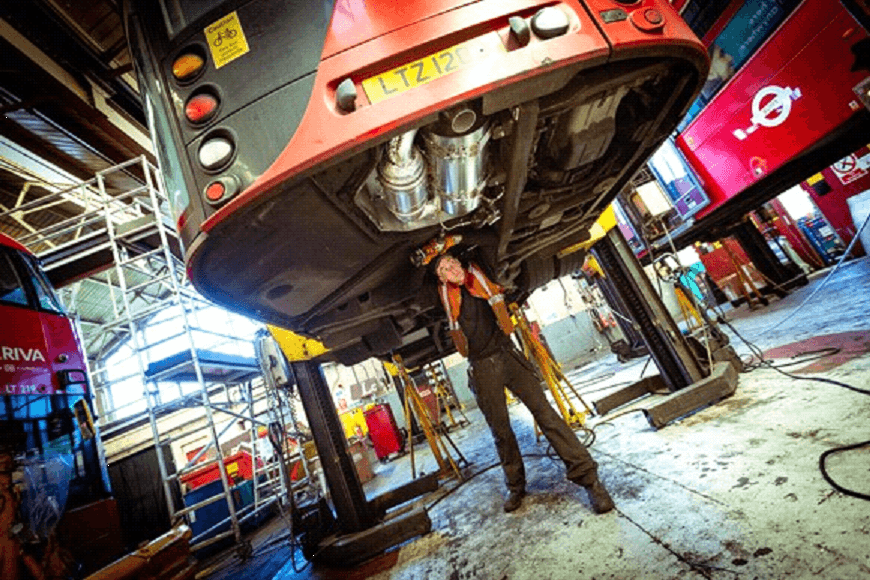TfL has announced 2037 as its target for all buses on its network to be zero emission. In the interim period the investment in more electric buses and the fitment of exhaust systems to current diesel buses will continue
London’s main bus network now exclusively uses Euro VI or cleaner buses, the same emissions standard as the Mayor of London’s Ultra Low Emission Zone, says Transport for London (TfL). Around 4,000 London buses have been retrofitted to reduce harmful nitrogen oxide levels by an average of 90%. 
TfL says it will now focus on growing its zero-emission bus network, meaning that all buses in TfL’s 9,000-strong bus fleet now meet or exceed the cleanest Euro VI emissions standards.
TfL says that this has significantly reduced the contribution from its buses to transport-related NOx emissions, with the proportion of transport nitrogen oxide (NOx) emissions coming from its buses reducing from 15% to just 4%.
In the coming years, TfL says that air quality will be further improved by moving towards a zero-emission bus network and helping to meet the Mayor’s zero carbon target by 2030, and that around £85m has been invested in retrofitting older diesel buses to meet or exceed the Euro VI emissions standards since 2017. Each retrofitted bus emits up to 95% less NOx emissions and 80% less particulate matter (PM) than before, leading to significant air quality improvements across London.
As a key stage in the retrofit programme, 12 Low Emission Bus Zones were delivered between 2017 and 2019 to tackle the worst air quality hotspots outside central London, by concentrating cleaner Euro VI buses on the most polluting routes. The zones included high streets and town centres in Brixton, Haringey and Putney, and were introduced one year ahead of target. The routes helped transform local air quality with a 98% reduction in hourly exceedances on Putney High Street since 2016, previously one of the most polluted parts of the capital.
More than 400 all-electric buses have been introduced – including the UK’s first full routes of electric double-decker buses – and around 300 additional zero-emission buses are expected to join the fleet by the end of this year.
TfL continues to roll out electric buses, with routes including 106, C10 and P5 converting last year, and has plans for 2,000 all-electric buses to be in operation by 2025.
Mayor of London Sadiq Khan said: “London’s toxic air is a public health crisis causing premature deaths and stunting the growth of children’s lungs. Today, as part of our work to tackle the twin dangers of toxic air pollution and the climate emergency, I am proud that the entire TfL core bus fleet now meets the strictest emissions standards.
“Today’s announcement is a major part of our plan to transform London’s entire bus fleet, which has reduced bus NOx emissions London-wide by an average of 90%. It will play a key role in London’s green recovery from the Covid-19 pandemic and will continue to provide job opportunities in London and across the UK. It also complements my plans to expand the Ultra Low Emission Zone up to the North and South Circular Roads in October this year.”
Claire Mann, Director of Bus Operations at TfL, added: “Londoners deserve to breathe clean air. Toxic air kills, reduces life quality and, as the pandemic has shown, leaves people more vulnerable to other threats. We’ve already seen how much retrofitted buses can clean up the air in busy London hotspots, and now with our retrofit programme complete on our core fleet the whole of the city will benefit from improved air quality.
“This programme has made our diesel buses as clean as they can be, but we are determined to go further. We will press ahead with our electrification programme and investments in other green technology to ensure all buses in London are zero emission by 2037 or hopefully, if additional financial support can be found, sooner.”


